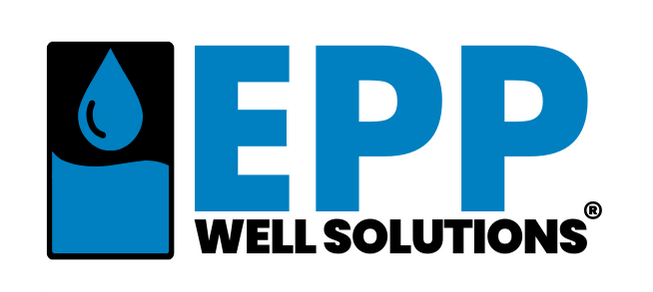Water Well Drilling Costs in 2025
For homeowners considering a private well as a reliable, independent water source, understanding the associated costs is a critical first step. Drilling a well is a significant investment, shaped by factors such as depth, soil conditions, well type, and regional differences. At Epp Well Solutions, we know navigating these costs can be overwhelming, especially when weighing the long-term benefits of well water against the upfront expenses. This article provides a comprehensive guide to well drilling costs in 2025, based on the latest industry data, to help you make an informed decision.
The Basics of Well Drilling Costs
Drilling a well involves more than just boring a hole in the ground—it requires professional expertise, specialized equipment, and various components to ensure a safe and sustainable water supply. In 2025, the average cost to drill and install a complete residential water well system ranges from $3,000 to $15,000, with most homeowners spending around $5,500 to $9,000. These figures cover drilling+ drilling, casing, pump installation, plumbing, electrical components, and permits, though costs can vary widely based on project specifics.
Costs are typically calculated on a per-foot basis, with drilling alone costing $15 to $25 per foot and complete system installation ranging from $25 to $65 per foot. For example, a 150-foot well, a common depth for residential wells, might cost $3,750 to $9,750 for drilling and installation, depending on complexity. Shallow wells (25 to 50 feet) are less expensive, averaging $1,800 to $3,000, while deeper wells (200 to 400 feet) can push costs toward the higher end.
Factors Influencing Well Drilling Costs
Several variables determine the final cost of drilling a well. Understanding these can help you budget effectively and avoid surprises. Here are the key factors:
Well Depth: Depth is the primary cost driver. Most residential wells range from 50 to 300 feet, with costs rising with depth due to increased labor, time, and materials. Shallow wells may cost $1,500 to $3,000, while deeper wells can reach $10,000 to $20,000.
Soil and Geological Conditions: Soft soils like sand are cheaper to drill ($25 to $35 per foot) than hard rock or clay, which may cost $50 to $75 per foot due to specialized equipment needs.
Well Type: Drilled wells (100 to 300 feet, $5,500 to $15,000) are common for residential use, while dug wells (25 to 50 feet, $1,800 to $3,000) suit high water tables but risk contamination. Driven wells ($4,000+) are less common, and artesian wells ($5,000 to $15,000) save on pump costs due to natural flow.
Casing and Materials: Casing to prevent collapse and contamination costs $5 to $130 per foot, with PVC at the low end and steel at the high end for durability.
Pump and System Components: Submersible pumps for deeper wells cost $300 to $2,000, while jet pumps for shallow wells are cheaper. Pressure tanks ($500 to $2,000) and electrical connections add $1,000 to $3,000.
Permits and Regulations: Permits cost $5 to $500, with some areas requiring inspections or water allocation limits.
Location and Accessibility: Rural areas may have lower costs, while urban or remote sites face higher labor and logistical expenses.
Water Testing and Treatment: Post-drilling testing costs $100 to $650 for professional analysis of contaminants. Treatment systems, if needed, range from $500 to $5,000.
Regional Cost Variations in 2025
Well drilling costs vary by region due to differences in labor rates, geology, and water table depth. In Texas, residential wells cost $9,000 to $20,000 for depths of 160 to 600 feet, reflecting diverse soil types. Pennsylvania wells range from $3,000 to $12,000 ($15 to $40 per foot), depending on geology. Arizona’s challenging conditions result in costs of $20 to $44 per foot, often exceeding $10,000. In Florida’s Spring Hill area, wells cost $5,500 to $35,000, with shallow wells (up to 100 feet) at $5,500 to $8,500 and deeper ones (over 300 feet) at the higher end. These variations underscore the need for local quotes and geological assessments.
A Cost-Effective Solution for Low-Producing Wells
For homeowners with wells that produce insufficient water, a low yield well system, like the Well Harvester®, offers a cost-effective way to maximize output. This patented technology adjusts water extraction based on real-time water levels, preventing overpumping and ensuring a steady supply. The system is also often a fraction of the cost of a new well. The Well Harvester® enhances efficiency, reliability, and sustainability, protecting the well and aquifer while meeting household needs, even during high demand or low recharge periods.
Strategies to Manage Costs
To keep well drilling costs manageable, consider getting multiple quotes from contractors to ensure competitive pricing. Placing the well close to your home reduces plumbing and electrical line costs. Investing in durable materials, like steel casing in challenging soils, can lower long-term maintenance expenses. Regular maintenance, including annual inspections and pump replacements every 10 to 15 years, prevents costly failures. Avoid DIY drilling, as it often leads to safety issues and higher correction costs. Regular water testing ($100 to $650 annually) ensures safety and longevity.
The Long-Term Value of a Well
Despite the upfront costs, a well offers significant long-term savings. Well water eliminates municipal water bills, saving hundreds annually, and provides independence from water restrictions. A well-maintained well can last 30 to 50 years, with components like pumps needing replacement every 10 to 15 years. The investment provides a reliable, high-quality water source, enhancing property value and self-sufficiency.
Making an Informed Decision
Drilling a well in 2025 is a substantial investment, with average costs of $3,000 to $15,000, depending on depth, geology, and system components. For low-producing wells, a low yield well system like the Well Harvester® from Epp Well Solutions provides a reliable, affordable solution to boost output without the high costs of new drilling. Before proceeding, consult a professional contractor for a site assessment and detailed estimate. With careful planning and the right technology, you can secure a sustainable water supply for decades.


